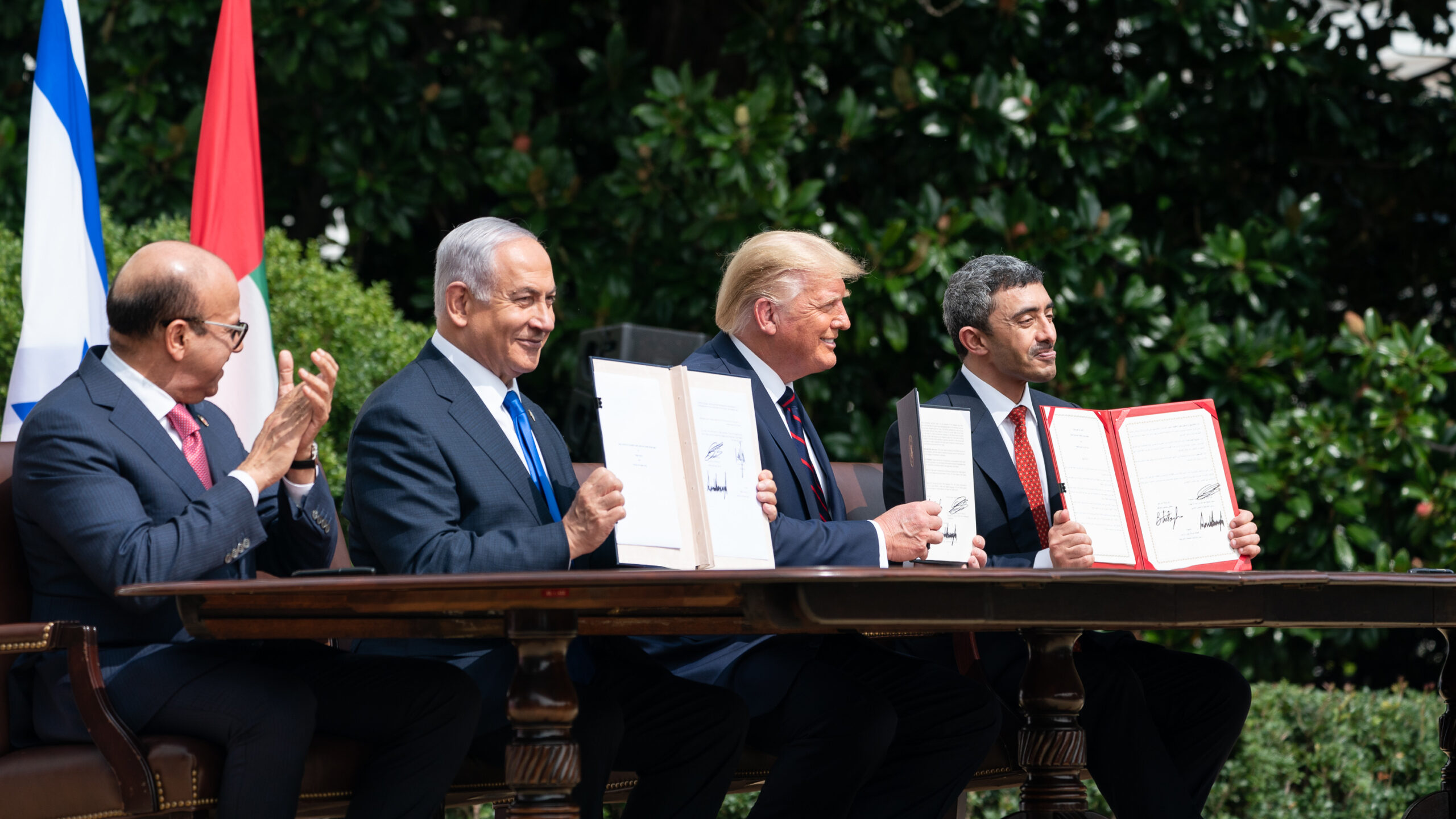Civilization
Time to Launch Abraham Accords 2.0
Abraham Accords 2.0 could solve the current regional conflict and pave the way to even greater prosperity and security.

Four years ago, the historic Abraham Accords between the UAE, Bahrain, and Israel were signed on the White House lawn. Morocco and Sudan soon followed. In the midst of the extremely challenging COVID-19 pandemic, a ray of light heralding a new era of peace, integration, and cooperation broke through the darkness.
A new set of Abraham Accords can solve current regional conflict
Hamas’ October 7 massacre led to an outbreak of regional conflict. Yet just as the original Abraham Accords peace agreements emerged during the COVID-19 era, the next stage of Middle East cooperation and integration—Abraham Accords 2.0—can emerge from the current period of war and tension.
Following the signing of the Abraham Accords, trade ties skyrocketed, over a million people traveled between the Accords’ member countries on new direct flights, and groundbreaking partnerships were announced in fields such as innovation, space, AI, water, cyber and sustainable development. Inspiring initiatives to advance interfaith harmony were launched, including the opening of Abu Dhabi’s Abrahamic Family House, and Muslim-Jewish leadership delegations between Israel and Morocco.
Yet even as Abraham Accords ties grew, a lack of robust American leadership over the last several years allowed China, Russia, and Iran to make inroads into both the MENA and Sahel regions. Then, Hamas’ October 7 rampage of murder, kidnappings, and rape, and the subsequent terror attacks by Iran’s proxy network, created an enormous challenge to regional peace. Extremist media networks like Al Jazeera spread incitement and distrust, while Muslim Brotherhood and Iranian-linked groups sought to use the conflict to promote instability.
The potential – and need – are great
At this time of war, the potential of the Abraham Accords to transform the Middle East from a source of conflict into a hub of innovation, economic growth, and tolerance not only remains but is more urgent than ever. Now is the time to launch the Abraham Accords 2.0 in order to shape a future of stability, prosperity, and peace for the region. The next stage of the Abraham Accords must be based both on expanding the circle of peace to include additional Arab and Muslim countries and on advancing paradigm-shifting regional economic, technological, and security initiatives with global impact.
On the economic level, such initiatives should involve advancing the India-Middle East-Europe Corridor such that it encompasses not only overland trade but energy and communications connectivity as well. IMEC would not only contribute to infrastructure development, employment, and global supply chain resilience, but could serve to counter China’s Belt and Road Initiative in the region. The existing Free Trade and Qualified Industrial Zones agreements between the United States and numerous regional countries could be expanded and leveraged to accelerate economic growth and integration.
Israel’s start-up dynamism and the GCC’s impressive track record of executing advanced technological projects could be combined via U.S.-led trilateral and multi-lateral frameworks to produce breakthroughs in innovation. Completing the regulatory frameworks and ensuring an encouraging public environment for deepening bilateral ties between current and potential Abraham Accords countries is critical as well.
Toward a secure – and prosperous – future
On the security level, a U.S.-led Middle East Security Architecture encompassing air and missile defense, drones, space, satellites, maritime security, cybersecurity, intelligence sharing, joint exercises, and R&D could empower regional allies to combat threats on their own. Such a regional alliance would help deter and counter Iran, thereby decreasing the chances of an all-out war and increasing the probability of a quick and decisive victory if such a war were to break out. It would also help protect U.S. bases, while enabling an eventual shift of U.S. assets to other theatres, including the Indo-Pacific.
Looking forward, once Hamas has been defeated, and the Gaza Strip has been demilitarized and deradicalized, Gaza could be integrated into new regional frameworks for economic, energy, and logistical cooperation. This would contribute to the stability and growth of the entire region.
Turning the Abraham Accords 2.0 vision into a reality will require strong American leadership and a holistic approach that combines diplomatic, economic, and security components. It will also require a willingness by the United States and all of its allies and partners in the region to actively invest in promoting Abraham Accords ties and breaking down long-standing barriers to cooperation.
Toward Abraham Accords 2.0
The ongoing conflict and geopolitical tensions should not lead us to abandon the successful strategies that led to the Abraham Accords. It is indeed more urgent than ever that we take ambitious steps to deepen these historic agreements, expand warm peace through strength, and shape a brighter future in the Middle East. At the darkest of times, the greatest opportunities can appear.
This article was originally published by RealClearWorld and made available via RealClearWire.
-

 Executive4 days ago
Executive4 days agoThe Last Supper: New York’s Socialist Feast
-

 Civilization4 days ago
Civilization4 days agoYoo Hoo, VP Vance—Your Character is Showing!
-

 Civilization5 days ago
Civilization5 days agoIvory Tower Thinking and Narcotics Boats
-

 Guest Columns3 days ago
Guest Columns3 days agoCongressional Leaders See Far Higher Stock Returns Than Peers
-

 Civilization4 days ago
Civilization4 days agoFacing Facts & Rolling Back Mythologies: The New National Security Strategy
-

 Civilization13 hours ago
Civilization13 hours agoDC Pipe Bomb Arrest Raises Questions About Christopher’s Wray’s FBI
-

 Civilization2 days ago
Civilization2 days agoThe Legal Logic Behind U.S. Operations Against Narco-Terrorist Networks
-

 Civilization3 days ago
Civilization3 days agoHow Trump Changed America








